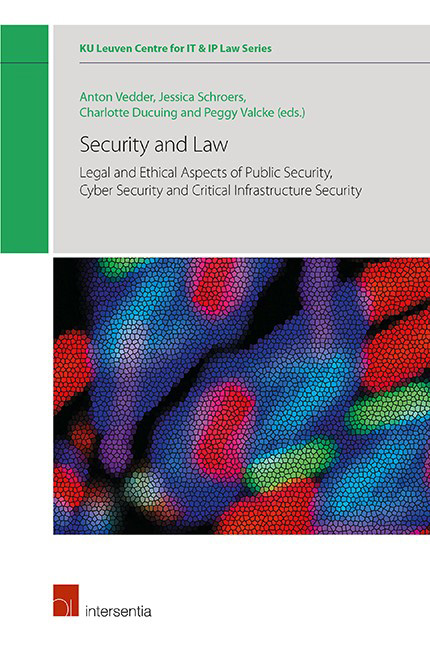 Security and Law
Security and Law Published online by Cambridge University Press: 23 January 2020
INTRODUCTION
“Identity management (or IdM for short), consists of the processes and all underlying technologies for the creation, management, and usage of digital identities.”
The relation of identity management to security is two-fold, since identity (and access) management systems are a security measure, which can in principle be for physical security (e.g. access to specific areas upon authentication) as well as for cybersecurity (e.g. access to data bases). This security measure is only useful if the identity management system itself is secure, which needs to be ensured by different parties. As the focus of this chapter is on the user security requirements for online identity management systems, especially national public electronic identity schemes, the relevant area of security addressed in this chapter is cyber security.
This chapter introduces the reader to identity management and shows the different legal requirements the users, such as citizens using governmental electronic identification means, might have to comply with. The main research problem to be discussed is whether identity management users can and should be able to comply with these requirements. The research is based upon an analysis of literature, legislation of Belgium, Germany and Estonia, and various statements of terms and conditions of different electronic identification schemes to identify different types of obligations for users. However, this is not intended to be a positivist analysis of all possible requirements that exist, but to show that various requirements exist and to question the applicability of certain requirements for users, based upon the analysis of risk regulation regimes and cultures by Renaud et al.
The chapter is structured as follows. First, an explanation of basic concepts of identity management is given. In the second part examples of different identity management systems are provided and obligations on users will be analysed in the third part. Finally, based on the analysis of risk regulation regimes and cultures by Renaud et al., the concept of reasonable care and the possibility of security by design are taken into account as potential influential factors.
WHAT IS IDENTITY MANAGEMENT?
A main function of identity management systems is to make it possible to authenticate entities online, since on the internet no general system to authenticate entities exists. Authentication is related to identification but nonetheless different. In simple terms, identification serves to identify a person, answering the question ‘who are you?’.
To save this book to your Kindle, first ensure no-reply@cambridge.org is added to your Approved Personal Document E-mail List under your Personal Document Settings on the Manage Your Content and Devices page of your Amazon account. Then enter the ‘name’ part of your Kindle email address below. Find out more about saving to your Kindle.
Note you can select to save to either the @free.kindle.com or @kindle.com variations. ‘@free.kindle.com’ emails are free but can only be saved to your device when it is connected to wi-fi. ‘@kindle.com’ emails can be delivered even when you are not connected to wi-fi, but note that service fees apply.
Find out more about the Kindle Personal Document Service.
To save content items to your account, please confirm that you agree to abide by our usage policies. If this is the first time you use this feature, you will be asked to authorise Cambridge Core to connect with your account. Find out more about saving content to Dropbox.
To save content items to your account, please confirm that you agree to abide by our usage policies. If this is the first time you use this feature, you will be asked to authorise Cambridge Core to connect with your account. Find out more about saving content to Google Drive.